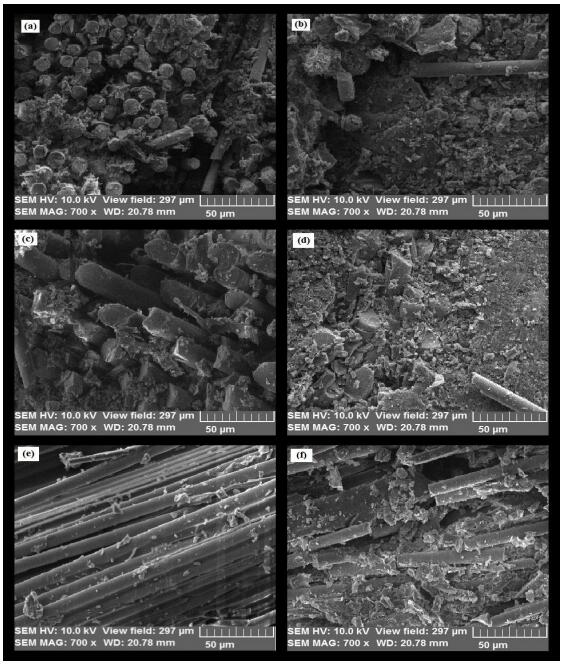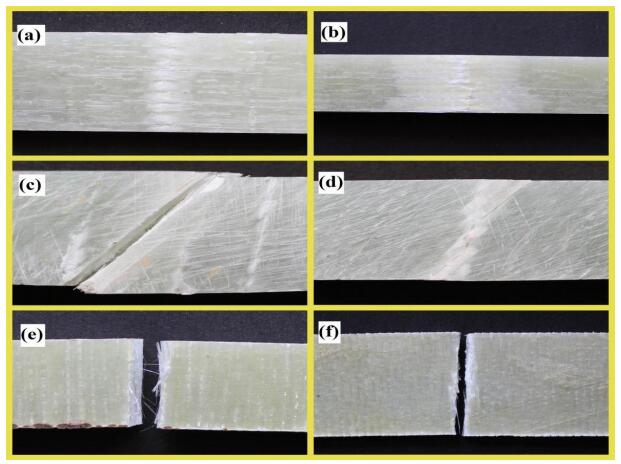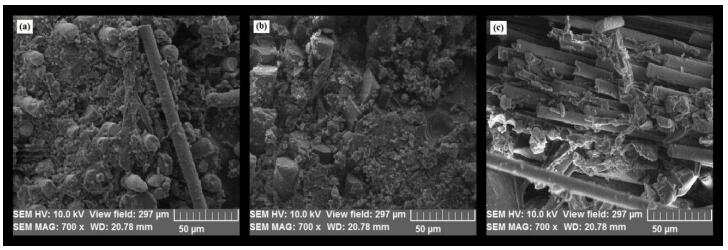1. Introduction
Fiber reinforced polymer composite materials are fundamentally, devised for definite relevancies because of their high specific stiffness/strength properties [1,2]. Mechanical properties of the FRP composite are very important in many structural applications. Thus, the enhancement of mechanical properties of the composite is of high importance [3,4]. Regularly, a polymer needs modifications for a superior range of functions that may need dissimilar structural or physical properties. One of the modification techniques is adding nano-fillers to the polymer to generate a composite with improved properties, such as enhancement in mechanical strength, electrical conductivity or thermal stability [5]. The utilization of nanoscale fillers to supplement the properties of polymers has led to significant improvement in polymer nanocomposites [6,7,8]. Polymer nanocomposites are an original class of composite materials in which one of the constituents has dimensions of 1–100 nm. The nanoscale fillers used as reinforcement materials for nanocomposites contain nanofibers, nanoplatelets, nano-clays, nanoparticles etc. Polymer nanocomposites exhibited superior mechanical performance and improved barrier properties at very low loading levels compared to conventional filler composites [9]. The mechanical, electrical and thermal properties of nanomaterials have made them interesting materials for the use, as fillers in polymers. An efficient exploitation of the properties of the nano-particles in order to improve the material performance generally related to the degree of dispersion, impregnation with matrix and to the interfacial adhesion [10]. The advantage of the nano scaled particles compared to the micro scaled fillers is their enormous surface area, which can act as interface for stress-transfer. However, a high specific surface area causes the formation of agglomerates. The agglomerates of the nanocomposite are difficult to separate and to infiltrate with the matrix. Hence an efficient technique has to be employed to disperse nanoparticles in epoxy resins showing better dispersibility [11].
A replacement of fibres by the nanoparticles in FRP can be regarded as unrealistic, due to the highly developed and well-established conventional fiber reinforcement of a polymer and their still unmatched level of material properties. Nevertheless, the combination of nano-modified matrix together with the conventional fibre reinforcements could lead to the new generation of a multi functional material [12]. In some of the studies, fibre orientations are considered to be continuous design variables and a finite set of angles are chosen during the design process because of the difficulty of exactly orienting fibres along a given direction [13].
In the present work, various nano-modified epoxies are used with E-glass unidirectional fibres to manufacture the nanocomposites using vacuum bagging technique. The interlaminar Shear Strength (ILSS) of the fabricated FRP nanocomposites are studied by three point bending test for different fibre orientations. To generate base line data, neat-epoxy/E-glass unidirectional fibre nanocomposite is also tested for ILSS at different fibre orientations and results are compared to understand the influence of nanoparticles at different fibre orientations. Further, the effects of specific surface area (SSA) of nanoparticles on the ILSS of the composite are also compared.
2. Materials and method
2.1. Materials
The materials include unidirectional (UD) glass fiber, epoxy resin and nano-particles in the fabrication of the required composite laminates. Various composite laminates are prepared based on matrices (epoxy/various nano-fillers) for the evaluation of ILSS. The glass fibers and the base matrix material is retained same in all the composites laminates. The base resin; diglycidyl ether of bisphenol A (DGEBA) and hardener; triethylene tetramine supplied by Ciba Geigy, India were mixed together in a ratio of 10:1 by weight. Different types of nano-fillers are used to modify the epoxy resin matrix; a) aluminium oxide (alumina) nano-particles (with an average particles size of 20 nm), b) aluminium oxide (alumina) nano-particles (with an average particles size of 40 nm and c) Zirconium oxide (zirconia) nano-particles (with an average particles size of 20 nm). The nanoparticles were supplied by M/S Nanobeach, India. The modified epoxy was then reinforced with glass fibre to form the composites. The glass fabric used was a unidirectional sheet of 220 gsm (Style; 92145) purchased from P-D Interglas Technologies, Erbach.
2.2. Experimentation
The X-ray diffraction (XRD) patterns were analyzed for various as received nanoparticles. X-ray diffraction studies were carried out on a PANalytical X'Pert3 X-ray diffractometer with incident X-ray wave length of 1.54 Å. Brunner–Emmett–Teller (BET) was used to find the specific surface area (SSA) of the nano-particles. The SSA of nanoparticles was measured by nitrogen physisorption using NOVA 1000 Quanta chrome high speed gas adsorption analyzer (ver 3.7) instrument.
The base resin in the stoichiometric amount was used as the starting matrix and it was modified by the various nanoparticles. Nanoparticles (at 1 wt%) were added slowly to resin and then mechanical stirring was done for about 30 minutes. After the mechanical stirring, modified epoxy solution was subjected to the ultrasonification for about 30 minutes. Sonification is done to speed up the dissolution by breaking intermolecular interactions of the nano particle and intercalation of monomer into interlayer galleries. The solution was mixed with the hardener and stirring up to 5–10 min was repeated.
The process is continued with laying-up individual sheets of unidirectional glass fibres in an open mold. The material is then covered with release film and a vacuum bag. A vacuum is then pulled on the part. The vacuum assists in removing any trapped air from the laminate. The composite laminates were cured by leaving them at the ambient temperature for 24 hours. The fibre weight was maintained to be 48% in all the composite laminates. To generate the base line data, glass fibre reinforced epoxy lamina without nanoparticles were also prepared. Care was taken that all the material system was processed under same condition using the same sequence of operations. Table 1 gives the four types of composite laminates fabricated.
Table 1. Various composite laminates fabricated based on matrices.
| Sl. No |
Composite |
Glass fiber (wt%) |
Epoxy (wt%) |
Fillers (wt%) |
| 1 |
A |
48 |
52.0 |
0.0 (Neat Composite) |
| 2 |
B |
48 |
51.0 |
1.0 (Alumina, 20 nm) |
| 3 |
C |
48 |
51.0 |
1.0 (Alumina, 40 nm) |
| 4 |
D |
48 |
51.0 |
1.0 (Zirconia, 20 nm) |
The sample were cut from the lamina at different fibre orientations such as 0° (longitudinal direction), 45° and 90° (transverse direction) to the following dimensions: Length: 48 mm, width: 16 mm, thickness: 8 mm. Following the ASTM D-2344 standard, the short beam shear (three point bending) test was conducted on a BiSS universal testing machine under 25 kN load cell with a cross head speed of about 1 mm/min. Span to thickness ratio was 4.
After the mechanical tests the fractured surfaces of the composite samples were examined by SEM (TESCAN VEGA3) to study the surface morphology. To understand the interfacial bonding between the fibers and the matrix in both neat and nano-modified samples, the SEM analysis was performed over the fractured surfaces of the samples. For enhancing the conductivity a thin film of gold is sputter-coated onto them by using a gold sputter coater (Quorum SC7620).
3. Results and discussion
As received alumina and zirconia nanoparticles were characterized by XRD analysis and the obtained patterns are shown in Figure 1. Peaks were noticed at 14.5°, 28°, 38.5°, 49° and 55° (Figure 1a, b) for alumina nanoparticles and at 30°, 35°, 50° and 60° (Figure 1c) for zirconia nanoparticles which indicates the characteristics peaks of respective materials. Also, the specific surface areas (SSA) of the nano-fillers found by BET tests are listed in Table 2.
Table 2. Average particle size of various filler calculated from Debye-Scherer's formula.
| Sl. No |
Particle type |
Particle size (Supplier data) |
SSA (Sauter formula) |
| 1 |
Al2O3 |
20 nm |
85.71 m2/gm |
| 2 |
Al2O3 |
40 nm |
42.85 m2/gm |
| 3 |
ZrO2 |
20 nm |
25.40 m2/gm |
The nano-modified epoxy is used in the manufacturing of the laminates by hand-layup followed by vacuum bagging. Though, a slight increase in the viscosity of the matrix was observed, the production of laminates with various nano-particles filled epoxy resin containing 1.0 wt% of the epoxy resin was possible. Nevertheless much higher concentration of nanoparticles resulted in processing problems because of dramatic increase in the viscosity of the nano-modified matrix.
ILSS of various fabricated laminates at different fibre directions is given in the Table 3. The composites exhibited improved interlaminar shear strength by the inclusion of nano-fillers. At 1 wt% of alumina (APS ≈ 20 nm) nano-fillers in the matrix the interlaminar shear strength was found to be enhanced from 47.48 ± 0.03 MPa to 48.38 ± 0.12 MPa along the longitudinal direction, from 12.29 ± 0.07 MPa to 13.33 ± 0.08 MPa along 45° orientation of fibers and from 5.65 ± 0.13 MPa to 6.64 ± 0.02 MPa along the transverse direction. The ILSS of the alumina (APS ≈ 20 nm) nano-modified epoxy/glass fiber composite is higher than that of the unmodified epoxy/glass fiber composite at all angles. Increased strength of the epoxy resin matrix caused by the nano-fillers and strengthened interface between the fibers and the matrix are the two reasons can explain the observed improvements of the ILSS. Figure 2 shows the SEM micrographs of the fractured surfaces of the various composites based on unmodified and nano-modified epoxy matrices. Figure 2a, c, e shows the SEM images of the samples tested along the longitudinal direction, 45° fiber orientation and the transverse direction of the neat FRP composite laminate respectively. Figure 2b, d, f shows the SEM images of the samples tested along the longitudinal direction, 45° fiber orientation and the transverse direction of the nano-modified FRP composite laminate respectively. Epoxy resin residues found on the fiber bundles for the alumina filled composite samples indicate good fiber-matrix bonding. Compared to the neat epoxy based composite, the increased matrix residues in the nano-modified samples correspond to the enhanced interfacial bonding between the glass fibers and epoxy resin.
Table 3. ILSS of the various composite laminates at different angles of fibres.
| Composite |
Interlaminar Shear Strength (ILSS), MPa |
| In the direction Perpendicular to fibres (Longitudinal) |
At 45° angle |
In the direction of fibres (Transverse) |
| A |
47.48 ± 0.03 |
12.29 ± 0.07 |
5.65 ± 0.13 |
| B |
48.38 ± 0.12 |
13.33 ± 0.08 |
6.64 ± 0.02 |
| C |
47.92 ± 0.06 |
13.04 ± 0.22 |
6.48 ± 0.05 |
| D |
47.82 ± 0.01 |
13.01 ± 0.21 |
6.46 ± 0.04 |
ILSS tests are performed over the composites by short beam three points bending method. In this mode of test, the load is applied in the plane perpendicular to the plane normal to the direction of aligned fiber where the ILSS of the FRP composite is governed by the properties of the matrix. Hence the addition of nano-fillers in the matrix is found to enhance the ILSS of the composite. Nano-modification of the matrix might lead to an improved interfacial bonding between the matrix and fibers.
In addition, the amount of enhancements of interlaminar shear strength along various fiber directions is also compared. Though, the interlaminar shear strength of the laminate is higher in the longitudinal direction, the maximum enhancements were found to be lowest (1.89%), compared to other directions. The enhancement in 45° angle of the laminate stands in mid order (8.50%) and that along the transverse direction seen to be highest (17.42%). The direction of fiber alignment also plays a major role in the ILSS of the FRP nano-composite. When an interlaminar shear load is applied on a test panel along the longitudinal direction, most of the load is carried by the fibers. Hence the properties of the modified matrix do not reflect in the composite. When the same panel is tested for the ILSS along its transverse direction, the properties of the matrix plays a significant role in carrying the load. Hence the modification of the matrix is found more significant in the ILSS of the FRP composite along the transverse direction.
Failure region of the various samples (prepared out of neat and modified matrix) tested under interlaminar shear loading along longitudinal direction, 45° orientation of fibers and transverse directions are shown in Figure 3.
However, in the samples tested along the longitudinal directions (Figure 3a, b), both the upper and lower surfaces underwent extensive damage. Damage in the upper surface of the beam is from compressive failure; damage in the lower surface is from tensile failure. In the failure mechanism shear cracking initiated and propagated between the fabric layers. Bending and peeling also occurred especially in the samples tested along the longitudinal directions due to the greater resistance offered by the fibers. Also, extensive de-bonding between fibers and matrix was also observed because of weaker fiber and matrix bonding in the absence of nano-fillers. Test samples containing nano-fillers showed a strong bonding of the matrix and fibers with less matrix cracking and fiber pull-out. The failure mechanism of the samples tested along 45° fiber orientations (Figure 3c, d) and transverse direction (Figure 3e, f) showed clear and smooth surface representing poor adhesion between fiber and matrix. In the samples tested along the 45° fiber orientations both de-cohesion at the interface and shear band formation in the matrix are controlling the strength of the composite.
Further, the ILSS of the nano-modified (1 wt% alumina nanoparticles of 40 nm size) FRP composite is found to be 47.92 ± 0.06 MPa along the longitudinal direction, 13.04 ± 0.22 MPa along the 45° fiber orientation and 6.48 ± 0.05 MPa along the transverse direction. The enhancements of ILSS are clearly seen in all the direction of the composites. After the tests the fractured surface of the test samples were examined under scanning electron microscopy. Figure 4 shows the SEM images of the fractured surface of the nano-modified samples tested at longitudinal direction, 45° fiber orientations and transverse directions of the composites.
Obviously, the images clearly show the improved fiber-matrix bonding in all the nano-modified samples tested. The fracture surface of the nano-composites seems to be rougher than that of the neat epoxy composites, suggesting that more energy was required for crack propagation in the nanocomposites. This is in good agreement with the results presented. The presence of nano-fillers is found to enhance the ILSS of the composites. From the results, the ILSS of the composites containing nano-fillers of 20 nm particles size are found to be superior to the composites filled with nanoparticles of 40 nm at similar loading of 1 wt% of the matrix due to their high specific surface area.
Failure region of the samples along longitudinal direction, 45° orientation of fibers and transverse directions are shown in Figure 5. No greater differences were observed in the failure regions of nano-modified samples containing nano-fillers of 20 nm and 40 nm particle size.
The ILSS of the nano-modified (zirconium oxide nanoparticles of 20 nm size) FRP composite is found to be 47.82 ± 0.01 MPa along the longitudinal direction, 13.01 ± 0.21 MPa along the 45° fiber orientation and 6.46 ± 0.04 MPa along the transverse direction. Compared to neat FRP, the enhancement of ILSS is clearly seen in all the direction of the composites. The percentage enhancements of ILSS of the composite are found to be higher along the transverse direction (14.34%) compared to other directions.
After the tests the fractured surface of the test samples were examined under scanning electron microscopy. Figure 6 shows the SEM images of the fractured surface of the nano-modified samples tested at longitudinal direction, 45° fiber orientations and transverse directions of the composites. The influences of the nano-fillers on the ILSS of the FRP composites are observed in this case also. The presence of nano-fillers is found to enhance the ILSS of the composites.
ILSS of the composites containing alumina nano-fillers are found to be superior to the composites filled with zirconia nanoparticles due to the higher specific surface area of the alumina nano-particles compared to the zirconia nanoparticles.
Failure region of the tested samples are shown in Figure 7. Test samples containing nano-fillers showed a strong bonding of the matrix and fibers with less matrix cracking and fiber pull-out. In the specimens tested along the longitudinal direction, larger failure area was observed due to the greater resistance for the applied load. In 45° and transverse direction of loading net matrix failure is noticed near the gauge section and no significant differences in the failure mechanism were observed between neat and nano-modified FRP samples.
4. Conclusions
Successful fabrication of various multi-phase UD-glass/epoxy composites with reinforcement of ceramic nano-fillers such as alumina (average particle size of 20 nm and 40 nm) and zirconia (20 nm) was made possible. The influences of the nano-fillers over the ILSS of the composites at various fiber directions are evaluated. The composites exhibited improved ILSS by the inclusion of nanoparticles at 1 wt% of the matrix. Further, the amount of enhancements was found higher along transverse direction of the composites. Also, the ILSS of the composites containing nanoparticles of smaller size are found to be superior to the composites filled with nanoparticles of larger size at similar loading, density of the fillers remaining the same. Further, due to the larger SSA of the alumina nanoparticles, the ILSS of the composites containing alumina nano-fillers are found to be superior to the composites filled with zirconia nanoparticles at similar particle size and loading.
Acknowledgements
We gratefully acknowledge research center, Dept. of Mechanical Engineering, Dayananda Sagar Academy of Technology and Management, Bangalore, India and Dept. of Mechanical Engineering, R.V. College of Engineering, Bangalore, India, for the support to carry out this work.
Conflict of interest
All authors declare no conflicts of interest in this paper.









 DownLoad:
DownLoad: 
















